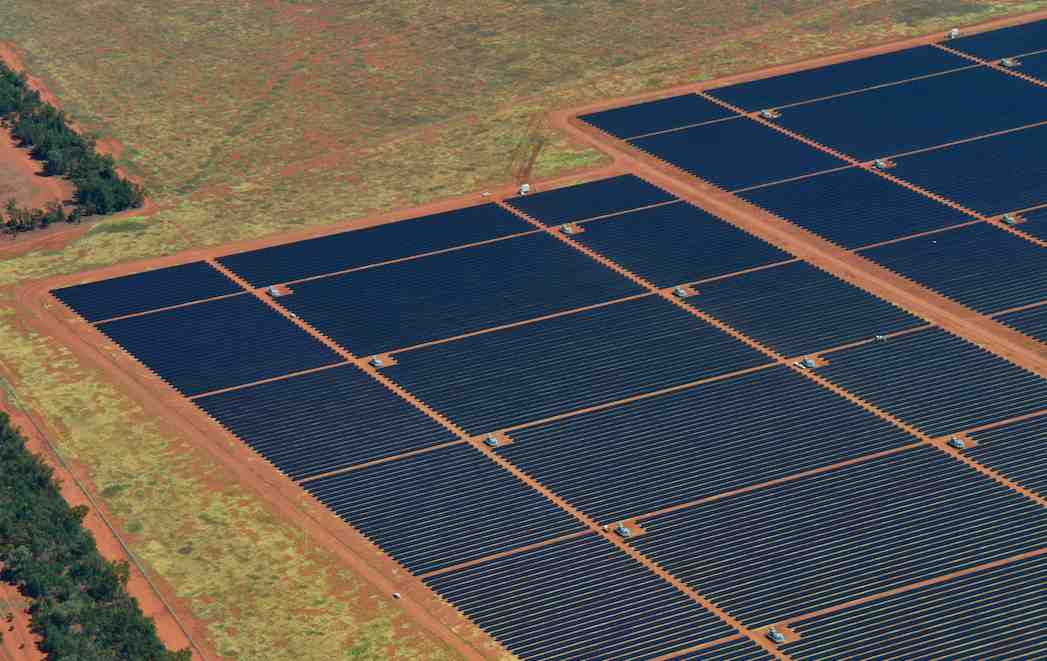A growing interest in the development of smaller-scale solar farms around Australia has won the backing of the Clean Energy Finance Corporation, which has committed $50 million in debt finance to Infradebt to pursue such projects.
The CEFC will invest alongside the Infradebt Ethical Fund (IEF), towards the specialist investor’s plans to underwrite greenfield renewable projects of 25MW or less, with a particular focus on regional areas.
The CEFC said the commitment would increase Infradebt’s committed discretionary capital by 50 per cent, to about $150 million, giving it the potential to finance upwards of 100MW in “a previously untapped” segment of the market, and “closing a persistent investment gap.”
Construction has already begun on the first two projects, for 5MW solar farms at Trundle Hill and Peak Hill in NSW, both near Parkes, which are being developed by Enerparc Australia.
Enerparc Australia managing director Ben Hanning said it was great to have senior debt finance in place for Peak Hill and Trundle, with construction well underway and first generation due in Q2 2020.
Smaller utility-scale projects, constructed close to demand and grid connections, is the primary focus of a new renewable energy investment vehicle, backed by UK-based infrastructure and private equity investment manager, Foresight Group.
In September Foresight launched a $150 million Foresight Renewable Energy Income Fund to make loans of $5-$30 million, predominantly to smaller-scale projects located in Australia.
In a statement on Wednesday, CEFC chief Ian Learmonth said smaller-scale renewables projects – while ideally suited to regional communities and industrial and commercial sites – had struggled to attract investment compared with larger projects, which promised greater economies of scale.
“Australia is a world leader in financing rooftop solar PV, as well as very large-scale solar developments, of 50MW or more. Projects of 25MW or less can also play a critical role in our clean energy transition.
“Working with Infradebt is an effective and efficient way of reaching projects in between these, in terms of size and value, creating exciting opportunities for regional communities and businesses to further benefit from low cost low emissions renewable energy,” Learmonth said.
“These developments require less land, meaning they can be built closer to regional communities to meet local energy demand. They can also be more easily integrated into the grid, drawing on existing infrastructure to deliver secure energy supplies.
“Projects of this scale are also attracting increasing interest from industrial and commercial energy users, who have the space and the energy demand to warrant investment in their own energy supply.”
Infradebt CEO Alexander Austin said the IEF invested in projects like Enerparc’s to make a sustainable difference.
“Our aim is to give superannuation funds and other long-term investors the opportunity to make a positive social and environmental impact at the same time as they enhance returns from the defensive part of their portfolio.
“We know the renewable market and we work with projects that are usually too small to obtain finance from traditional banks. That experience and point of difference has helped deliver solid returns in the past two years,” Austin said.
“The CEFC investment will help us continue that work and strengthen our focus on an under-utilised segment of the renewable energy market.”
The IEF has a portfolio of 22 projects, including the 20MW Chinchilla Solar Farm and the 34.5MW Brigalow Solar Farm in Queensland, the 20MW Swan Hill Solar Farm in Victoria and two 5MW projects in South Australia.








